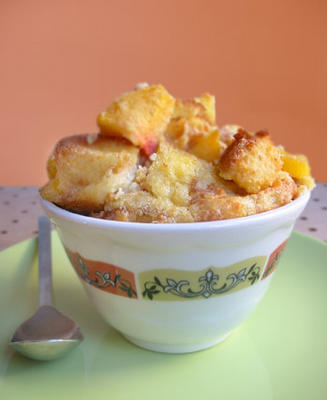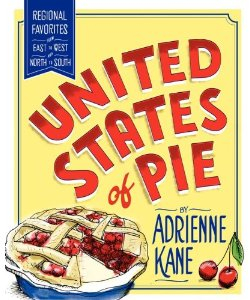 I am a Thanksgiving traditionalist. I don’t like anything fantastical at my feasts, and I come from a long line of traditionalists. Parsnip-Potato Puree may be scrumptious any other day of the year, but on Turkey Day it has to be pure– Russet Potatoes mashed with milk and butter and slathered in homemade turkey gravy. For me a ginger-lime rub on the turkey would be sacrilege, I’ll take butter anyday, and I’m getting racy if I add some bourbon to the sweet potatoes. For one day a year I forget about being bourgie, and it’s true Americana at my house.
I am a Thanksgiving traditionalist. I don’t like anything fantastical at my feasts, and I come from a long line of traditionalists. Parsnip-Potato Puree may be scrumptious any other day of the year, but on Turkey Day it has to be pure– Russet Potatoes mashed with milk and butter and slathered in homemade turkey gravy. For me a ginger-lime rub on the turkey would be sacrilege, I’ll take butter anyday, and I’m getting racy if I add some bourbon to the sweet potatoes. For one day a year I forget about being bourgie, and it’s true Americana at my house.
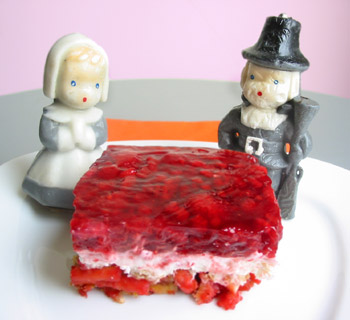 But this year I borrowed from another family’s tradition and made the weird and wonderful Layered Raspberry Jello Salad. Salty, sweet, and pungent, this is a bizarre trio of flavors– raspberry jello with whole raspberries, Cool Whip, mixed with cream cheese, all plunked on top of a crust of salted, crushed pretzel sticks and butter. Mmmm.
But this year I borrowed from another family’s tradition and made the weird and wonderful Layered Raspberry Jello Salad. Salty, sweet, and pungent, this is a bizarre trio of flavors– raspberry jello with whole raspberries, Cool Whip, mixed with cream cheese, all plunked on top of a crust of salted, crushed pretzel sticks and butter. Mmmm.
First let me say, I am not one of those people who is ga-ga for jello. It all seems a little strange to me; a clear concoction of sweetened fruit is an alien invention– just eat a piece of fruit. Mixing the cream cheese with the confectioner’s sugar, and blending it with the whipped topping, made my stomach turn, but the layering process was a thing of beauty. Neatly wedged into a clear Pyrex baking dish, then plunked in the refrigerator to set, this quivering mass of white trash goodness came out only hours later and made me giggle with glee. The holiday season had arrived!
What makes this “salad” even more of an anomaly, is the recipe doesn’t even come from a typical American family. My sister had a roommate in college who was first generation American, much of her family is still in Italy, and scattered around the world. They had a huge Thanksgiving feast, replete with an American-style turkey, and many Italian side dishes. They always ate early in the day, and my sister and I would stop by to wish them a happy Thanksgiving before our own feast began. We would bring some fudge that my mother had made the night before, and in return we would get a plate of Italian cookies, and a little dish of Raspberry Layer Salad for my sister and I to share. We loved the stuff!
Those Thanksgivings have passed. It had been years since I had tasted the jello salad, but I thought of it each November, as I was buying up my yams, and sorting through mounds of brussel sprouts. So this year I decided to make it, and it was almost as good as I remembered. It was a little too strange for some people at our Thanksgiving dinner, and that’s fine. They don’t know what they are missing.


 Chili is a food of cooking lore. Days are spent with giant pots simmering away on the stove. Women and men don their American flag aprons and head to the county fair for endless chili cook-offs. Secret recipes are de riguer. I’ve never really understood what all of the hullabaloo was about. Sure I love chili as much as the next girl, but I would be hard-pressed to mention a food that can be consumed in a bowl that I would wait hours, even days to consume.
Chili is a food of cooking lore. Days are spent with giant pots simmering away on the stove. Women and men don their American flag aprons and head to the county fair for endless chili cook-offs. Secret recipes are de riguer. I’ve never really understood what all of the hullabaloo was about. Sure I love chili as much as the next girl, but I would be hard-pressed to mention a food that can be consumed in a bowl that I would wait hours, even days to consume.
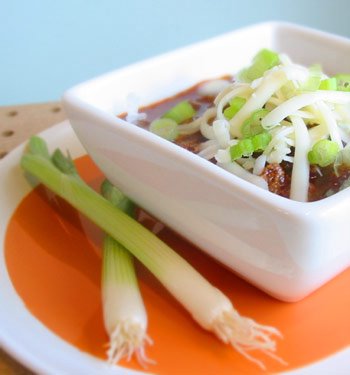
 Early in the week I made butternut squash puree by roasting a whole squash for one hour, discarding the seeds, scooping out the flesh, and making a sumptuous puree with chopped fresh sage. I ate the puree as a vegetable side dish during one meal, but as usual was left with quite a bit leftover. You know the saying, “Waste not, want not.” Well I never truly agreed with the aphorism, but for the sake of of this “risotto,” I would find myself swearing by it. Like any good bourgie knows, if you enjoy an ingredient prepared one way, chances are you will enjoy it prepared another. And since it is fall, I say, “Bring on the squash!” in all of its many forms.
Early in the week I made butternut squash puree by roasting a whole squash for one hour, discarding the seeds, scooping out the flesh, and making a sumptuous puree with chopped fresh sage. I ate the puree as a vegetable side dish during one meal, but as usual was left with quite a bit leftover. You know the saying, “Waste not, want not.” Well I never truly agreed with the aphorism, but for the sake of of this “risotto,” I would find myself swearing by it. Like any good bourgie knows, if you enjoy an ingredient prepared one way, chances are you will enjoy it prepared another. And since it is fall, I say, “Bring on the squash!” in all of its many forms.

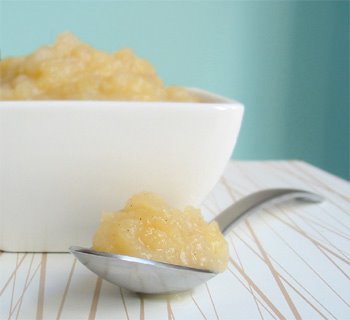

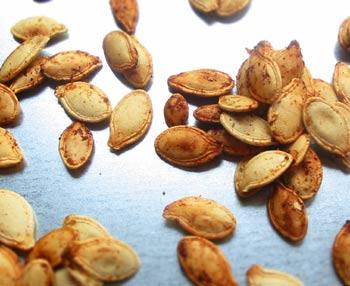
 I have problems with the ordinary tuna fish sandwich. It is as if all of my food taboos come crashing together in one hand-held mass. Traditional tuna fish can be a globulous, mushy, mayo-filled nightmare, and I just won’t have it! It’s true, I have a problem with mayonnaise. Maybe it’s the Jew in me. So the traditional tuna fish sandwich is out, but that doesn’t mean I have a problem with tuna itself. In fact, I kind of like the stuff, especially in a Tuna Fish Sandwich a la Bourgie.
I have problems with the ordinary tuna fish sandwich. It is as if all of my food taboos come crashing together in one hand-held mass. Traditional tuna fish can be a globulous, mushy, mayo-filled nightmare, and I just won’t have it! It’s true, I have a problem with mayonnaise. Maybe it’s the Jew in me. So the traditional tuna fish sandwich is out, but that doesn’t mean I have a problem with tuna itself. In fact, I kind of like the stuff, especially in a Tuna Fish Sandwich a la Bourgie.
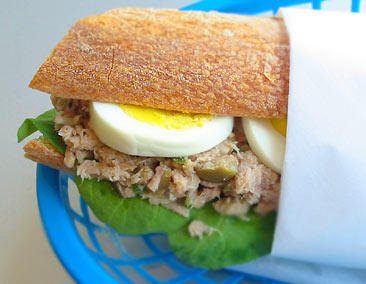 This is a tuna sandwich with a decidedly Mediterranean bent. Fish packed in olive oil make all the difference. Yes, it is a bit more expensive, but for these few dollars more you get a fresher tasting, more palatable product. It takes the fishiness out of a tuna fish sandwich. Chopped olives, Greek or green, give the sandwich some needed color, and add to the briny flavor. And finally, some finely minced, fresh jalapenos, give this lunchtime treat a piquant kick.
This is a tuna sandwich with a decidedly Mediterranean bent. Fish packed in olive oil make all the difference. Yes, it is a bit more expensive, but for these few dollars more you get a fresher tasting, more palatable product. It takes the fishiness out of a tuna fish sandwich. Chopped olives, Greek or green, give the sandwich some needed color, and add to the briny flavor. And finally, some finely minced, fresh jalapenos, give this lunchtime treat a piquant kick.  After my latest delectable
After my latest delectable 